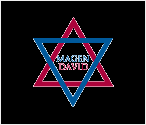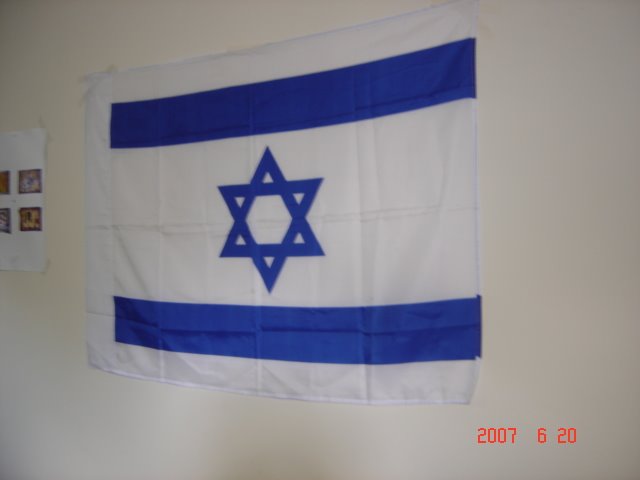by Rabbi Kalman Packouz | Insights into life, ideas for personal growth |
GOOD MORNING! Purim is coming up next week! Purim is the holiday that reminds us that God runs the world behind the scenes. Nowhere in the Megillas Esther is the name of God mentioned, though there is a tradition that every time the words "the King" are used it also refers to the Almighty.
Megillas Esther is a book full of suspense and intrigue with a very satisfying ending -- the Jewish people are saved from destruction! I highly recommend Turnabout -- it has an English translation of the Megillah (literally: scroll) as well as a rendition of the Purim story incorporating the commentary of the Malbim (available at your local Jewish bookstore, at JudaicaEnterprises.com or by calling toll-free to 877-758-3242).
Purim is celebrated Monday night, March 9th, through all day Tuesday (except in those places noted below). It is preceded by the Fast of Esther on Monday, March 9th -- from dawn until after the Megilla is read -- commemorating the three day Fast of Esther and the Jewish people before she approached King Ahashverosh with her request.
A great book elucidating Purim is Rabbi Shimon Apisdorf's The One Hour Purim Primer -- Everything a family needs to understand, celebrate and enjoy Purim (available at your local Jewish bookstore, at judaicaenterprises.com or by calling toll-free to 877-758-3242). One thing that Rabbi Apisdorf wrote, greatly impacted me: If a family is a "twice a year to synagogue" family, then he "votes for Purim and Simchas Torah (when everyone dances around celebrating the completion and beginning of reading the Torah)." Our kids should see and be a part of the joy of being Jewish!
Purim comes from the word "pur" in Persian which means "lots" -- as in, "Haman cast lots for the most 'auspicious' date to kill the Jews." The date fell on the 13th of Adar. The events of that date were turned around from a day of destruction to a day of victory and joy. We celebrate Purim on the 14th of Adar for "they gained relief on the fourteenth, which they made a day of feasting and gladness" (Megillas Esther 9:17).
In very few places -- most notably in Jerusalem -- Purim is celebrated the following day, the 15th day of Adar. The Sages declared that all cities which were walled cities at the time of Joshua should celebrate Purim the following day. This is to commemorate the extra day which King Ahashverosh granted Esther to allow the Jews of Shushan [the capital of Persia, which, by the way, was a walled city] to deal with their enemies. In Shushan they gained relief on the fifteenth. The holiday is called Shushan Purim in those locales.
There are two ways in which to try to destroy the Jewish people -- physically and spiritually. Our enemies have attempted both. Chanukah is the celebration over those who have tried and failed to culturally assimilate us (the Greeks and Western Culture); Purim is the celebration over those who have tried and failed to physically destroy us (the Persians, ad nauseam).
Why do we masquerade with costumes and masks on Purim? As mentioned above, nowhere in the Megillas Esther does God's name appear. If one so desires, he can see the whole Purim story as a chain of coincidences totally devoid of Divine Providence. Just as we hide behind masks, but our essence is still there, so too God has "hidden His face" behind the forces of history, but is still there guiding history.
Why do we make noise every time Haman's name is mentioned in the Megillah? The answer: Haman was an Amalekite, from that people which embodies evil and which the Torah commands us to obliterate. By blotting out Haman's name we are symbolically wiping out the Amalekites and evil.
The holiday is celebrated by hearing the Megillah Monday night and Tuesday morning. During the day only, we fulfill three mitzvot: 1) Matanot L'evyonim -- giving gifts or money to at least two poor people. (While it is good to give locally, one can also fulfill the mitzvot by giving at http://www.KerenYandY.comfor the poor Jews of Jerusalem) 2) Mishloach Manot, the "sending of portions," giving at least two ready-to-eat foods to a minimum of one person -- ideally via a messenger. 3) Seudah, a festive meal. During the meal we are commanded to drink wine until we don't know the difference between "Blessed is Mordechai" and "Cursed is Haman." (It can also be fulfilled by drinking a little and taking a nap -- one doesn't know the difference between them while sleeping...)
Why are we instructed to drink this amount? In a certain sense, Purim is greater than Yom Kippur (In Hebrew, Yom Kippur can be read as "Yom K' Purim" -- "a day similar to Purim". On Yom Kippur we fast; it is easy for our soul to have dominance over the body. Purim is the epitome of integrating the physical and the spiritual towards realizing that the Almighty loves us. The only thing that stands between you and the Almighty -- is you. The wine and the spirit of the day help us get beyond the barrier -- to realize that everything comes from the Almighty and that everything is ultimately for our good.
The mitzvot of Mishloach Manot and giving gifts to the poor were prescribed to generate brotherly love between all Jews. When there is love and unity amongst us, our enemies cannot harm us!
For more final meeting with Reb Noah, he gave me a bracha (blessing) with the ultimate key to success, "Feel how much the Almighty loves you …and you will be filled with all the power to accomplish anything in this world!" No joke.
For more on "Purim" go to http://www.aish.com/purim!
Torah Portion of the Week
Tetzaveh
The Torah continues this week with the command to make for use in the Mishkan, the Portable Sanctuary -- oil for the Menorah and clothes for the Cohanim, the Priests. It then gives instruction for the consecration of the Cohanim and the Outer Altar. The portion concludes with instructions for constructing the Incense Altar.
* * *
Dvar Torah
based on Growth Through Torah by Rabbi Zelig Pliskin
The Torah states,
"Make a forehead plate of pure gold, and engrave on it in the same manner as a signet ring, (the words), 'Holy to God'. Attach a twist of sky-blue wool to it, so that it can be (worn) right near the front of the turban" (Exodus 28:36-37).
Each of the garments of the Cohanim, the Priests who served in the Mishkan, had a spiritual correspondence and influence. The turban, which is on top of the head, atoned for arrogance and conceit. There is, however, a time for pride -- when a person is proud to do the will of the Almighty. The Ksav Sofer, a great rabbi, commented that this is alluded to in our verse. When pride is "holy to the Almighty" then it can be on top of a person's head.
Arrogance is a trait that is detrimental to one's spiritual development and causes many difficulties when dealing with other people. However, when you are proud of fulfilling the Torah commandments, you will continue to do so even if others will mock or insult you.
CANDLE LIGHTING - March 6
(or go to http://www.aish.com/shabbat/
Jerusalem 5:01
Guatemala 5:53 - Hong Kong 6:09 - Honolulu 6:19
J'Burg 6:15 - KOAH PORTO 5:31 - Los Angeles 5:35
Melbourne 7:35 - Mexico City 6:25 - Miami 6:07
New York 5:34 - Singapore 7:01 - Toronto 5:54
QUOTE OF THE WEEK:
We are continually faced with
a series of great opportunities
brilliantly disguised as
insoluble problems
-- John W. Gardner
| In Loving Memory of Sheri Brown with heartfelt condolences to Alvin & Evelyn Brown |
| Shabbat Shalom, Rabbi Kalman Packouz |




